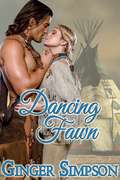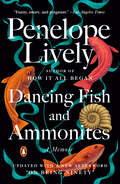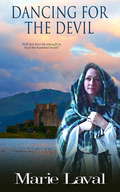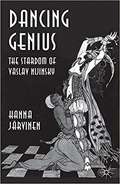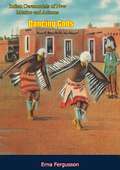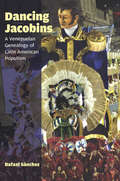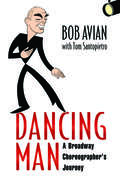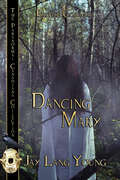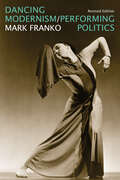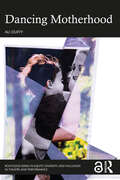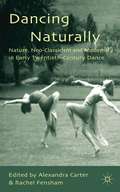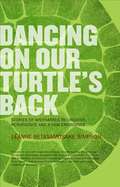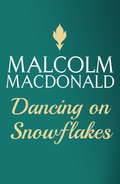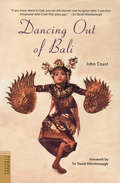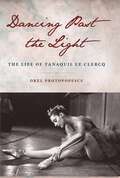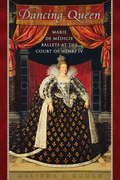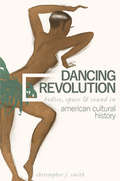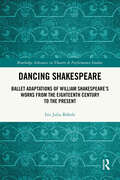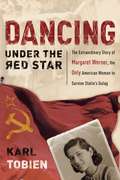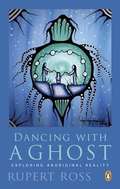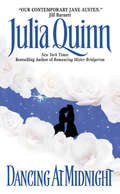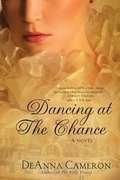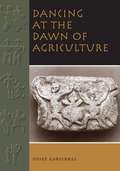- Table View
- List View
Dancing Fawn
by Ginger SimpsonGrace Cummings’ family is killed and she’s taken captive by a war party of young Lakota’s hungry to fight the white men encroaching on their sacred black hill; land granted them in a treaty with the government. The brave responsible for leading the war party and Grace’s captor is shunned by the tribe for drawing attention to their band and leaves the village, giving Grace to Little Elk, the nephew of the chief. With the help and guidance of another white woman in camp, Green Eyes, wife of the chief, Grace learns important facts about the tribe and accepts her given Lakota name, Dancing Fawn… and the love of Little Elk. While the warriors are away joining with other tribes to fight the war brought upon them by the young warriors, white soldier attack the camp, killing only women, children, and old men. Dancing Fawn is discovered, identified as a white captive and forced to return with the soldiers to Fort Sully. Tied hands and constant guarding display she’s not going voluntarily. Back in civilization and under the watchful eye of the Colonel’s wife, Fawn must decide where her heart truly lies.
Dancing Fish and Ammonites: A Memoir
by Penelope LivelyThe beloved and bestselling author takes an intimate look back at a life of reading and writing“The memory that we live with . . . is the moth-eaten version of our own past that each of us carries around, depends on. It is our ID; this is how we know who we are and where we have been.”Memory and history have been Penelope Lively’s terrain in fiction over a career that has spanned five decades. But she has only rarely given readers a glimpse into her influences and formative years.Dancing Fish and Ammonites traces the arc of Lively’s life, stretching from her early childhood in Cairo to boarding school in England to the sweeping social changes of Britain’s twentieth century. She reflects on her early love of archeology, the fragments of the ancients that have accompanied her journey—including a sherd of Egyptian ceramic depicting dancing fish and ammonites found years ago on a Dorset beach. She also writes insightfully about aging and what life looks like from where she now stands.
Dancing For The Devil (Dancing For The Devil Ser. #3)
by Marie LavalCan her love heal his haunted heart? - Cape Wrath, Scotland, November 1847. Bruce McGunn is a man as brutal and unforgiving as his land. Discharged from the army, he is haunted by the spectres of his fallen comrades and convinced he is going mad. And he is running out of time to save his estate from the machinations of Cameron McRae, heir to the McGunn's ancestral enemies. When the clipper carrying McRae?s new bride is caught in a violent storm and docks at Wrath harbour, Bruce decides to revert to the old ways and hold the clipper and the woman to ransom. However, far from the spoilt heiress he expected, Rose is genuine, funny and vulnerable ? a ray of sunshine in the long, harsh winter that has become his life. Rose is determined to escape Wrath and its proud master ? the man she calls McGlum. Will she be reunited with Cameron McRae, the dazzlingly handsome aristocrat she married after a whirlwind romance in Algiers, or will she risk her heart and her honour to help Bruce discover the truth about his past and solve the brutal murders committed on his land?
Dancing Genius: The Stardom of Vaslav Nijinsky
by Hanna JärvinenTracing the historical figure of Vaslav Nijinsky in contemporary documents and later reminiscences, Dancing Genius opens up questions about authorship in dance, about critical evaluation of performance practice, and the manner in which past events are turned into history.
Dancing Gods: Indian Ceremonials of New Mexico and Arizona
by Erna FergussonThe dances and ceremonials of the Native Americans of the Southwest are described and explained this information, authentic guidebook. The author, internationally famous Erna Fergusson, has drawn upon many years of personal observation and careful research.The principal religious ceremonies of the Pueblo Indians of the Rio Grande, as well as those of the Zuñi and Hopi, are represented with an understanding of their background and significance. The reader learns about such colorful events as the Corn Dances and the Eagle Dance, and spectacular ceremonies like the Shaloko of Zuñi and the Snake-dances of the Hopis.Navajo and Apache ceremonials are covered at length, with an introduction to the life-patterns of these remarkable people.Besides the principal dances widely attended by tourists, this book discusses many of the lesser-known but equally interesting and dramatic happenings which have been a part of the religious life of Southwestern Native Americans for hundreds of years.Sixteen full-page illustrations of paintings by prominent artists give insight into the subject.
Dancing Jacobins: A Venezuelan Genealogy of Latin American Populism
by Rafael SánchezSince independence from Spain, a trope has remained pervasive in Latin America’s republican imaginary: that of an endless antagonism pitting civilization against barbarism as irreconcilable poles within which a nation’s life unfolds. This book apprehends that trope not just as the phantasmatic projection of postcolonial elites fearful of the popular sectors but also as a symptom of a stubborn historical predicament: the cyclical insistence with which the subaltern populations menacingly return to the nation’s public spaces in the form of crowds.Focused on Venezuela but relevant to the rest of Latin America, and drawing on a rich theoretical literature including authors like Derrida, Foucault, Lacoue-Labarthe, Nancy, Lyotard, Laclau, Taussig, and others, Dancing Jacobins is a genealogical investigation of the intrinsically populist “monumental governmentality” that in response to this predicament began to take shape in that nation at the time of independence. Informed by a Bolivarian political theology, the nation’s representatives, or “dancing Jacobins,” recursively draw on the repertoire of busts, portraits, and equestrian statues of national heroes scattered across Venezuela in a montage of monuments and dancing—or universal and particular. They monumentalize themselves on the stage of the polity as a ponderously statuesque yet occasionally riotous reflection of the nation’s general will.To this day, the nervous oscillation between crowds and peoplehood intrinsic to this form of government has inflected the republic’s institutions and constructs, from the sovereign “people” to the nation’s heroic imaginary, its constitutional texts, representative figures, parliamentary structures, and, not least, its army. Through this movement of collection and dispersion, these institutions are at all times haunted and imbued from within by the crowds they otherwise set out to mold, enframe, and address.
Dancing Man: A Broadway Choreographer's Journey
by Bob AvianTony and Olivier Award–winning Bob Avian’s dazzling life story, Dancing Man: A Broadway Choreographer’s Journey, is a memoir in three acts. Act I reveals the origins of one of Broadway’s legendary choreographers who appeared onstage with stars like Barbra Streisand and Mary Martin all before he was thirty. Act II includes teaching Katharine Hepburn how to sing and dance in Coco and working with Stephen Sondheim and Michael Bennett while helping to choreograph the original productions of Company and Follies. During this time, Avian won a Tony Award as the cochoreographer of A Chorus Line and produced the spectacular Tony Award–winning Dreamgirls. For a triumphant third act, Avian choreographed Julie Andrews’s return to the New York stage, devised all of the musical staging for Miss Saigon and Sunset Boulevard, and directed A Chorus Line on Broadway. He worked with the biggest names on Broadway, including Andrew Lloyd Webber, Carol Burnett, Jennifer Holliday, Patti LuPone, Elaine Stritch, and Glenn Close. Candid, witty, sometimes shocking, and always entertaining, here at last is the ultimate up-close and personal insider’s view from a front row seat at the creation of the biggest, brightest, and best Broadway musicals of the past fifty years.
Dancing Mary: The Paranormal Canadiana Collection (The Paranormal Canadiana Collection)
by Jay Lang-YoungIn the shadows of British Columbia’s Comox Valley, a tragic history refuses to rest. Based on chilling true events, Dancing Mary unearths the long-buried story of a young K’ómoks First Nation woman—named Mary by early settlers—who was betrayed and murdered by the very man she once trusted. Her spirit, said to appear as a shimmering blue orb, haunted the area for decades. The last vivid encounter occurred in 1914, when a soldier cycling down Comox Road rode through the ghostly light and described another worldly cold that he would never forget. From that moment on, the legend of “Dancing Mary” was born—named for the spectral sway of her ghostly presence.
Dancing Modernism / Performing Politics
by Mark FrankoIn the much-anticipated update to a classic in dance studies, Mark Franko analyzes the political aspects of North American modern dance in the 20th century.A revisionary account of the evolution of modern dance, this revised edition of Dancing Modernism / Performing Politics features a foreword by Juan Ignacio Vallejos on Franko's career, a new preface, a new chapter on Yvonne Rainer, and an appendix of left-wing dance theory articles from the 1930s. Questioning assumptions that dancing reflects culture, Franko employs a unique interdisciplinary approach to dance analysis that draws from cultural theory, feminist studies, and sexual, class, and modernist politics. Franko also highlights the stories of such dancers as Isadora Duncan, Martha Graham, and even revolutionaries like Douglas Dunn in order to upend and contradict ideas on autonomy and traditionally accepted modernist dance history.Revealing the captivating development of modern dance, this revised edition of Dancing Modernism / Performing Politics will fascinate anyone interested in the intersection of performance studies, history, and politics.
Dancing Motherhood (Routledge Series in Equity, Diversity, and Inclusion in Theatre and Performance)
by Ali DuffyDancing Motherhood explores how unique factors about the dance profession impact pregnant women and mothers working in it. Ali Duffy introduces the book by laying a foundation of social and cultural histories and systemic structures and power that shape the issues mothers in dance negotiate today. This book then reveals perspectives from mothers in dance working in areas such as performance, choreography, dance education, administration, and advocacy though survey and interview data. Based on participant responses, recommendations for changes in policy, hiring, evaluation, workplace environment, and other professional and personal practices to better support working mothers in dance are highlighted. Finally, essays from eight working mothers in dance offer intimate, personal stories and guidance geared to mothers, future mothers, policymakers, and colleagues and supervisors of mothers in the dance field. By describing lived experiences and offering suggestions for improved working conditions and advocacy, this book initiates expanded discussion about women in dance and promotes change to positively impact dancing mothers, their employers, and the dance field.
Dancing Naturally
by Alexandra Carter Rachel FenshamA renewed interest in nature, the ancient Greeks, and the freedom of the body was to transform dance and physical culture in the early twentieth century. The book discusses the creative individuals and developments in science and other art forms that shaped the evolution of modern dance in its international context.
Dancing On Our Turtle's Back: Stories of Nishnaabeg Re-creation, Resurgence, and a New Emergence
by Leanne SimpsonMany promote Reconciliation as a "new" way for Canada to relate to Indigenous Peoples. In Dancing on Our Turtle's Back: Stories of Nishnaabeg Re-Creation, Resurgence, and a New Emergence activist, editor, and educator Leanne Simpson asserts reconciliation must be grounded in political resurgence and must support the regeneration of Indigenous languages, oral cultures, and traditions of governance. Simpson explores philosophies and pathways of regeneration, resurgence, and a new emergence through the Nishnaabeg language, Creation Stories, walks with Elders and children, celebrations and protests, and meditations on these experiences. She stresses the importance of illuminating Indigenous intellectual traditions to transform their relationship to the Canadian state. Challenging and original, Dancing on Our Turtle's Back provides a valuable new perspective on the struggles of Indigenous Peoples.
Dancing On Snowflakes
by Malcolm MacdonaldChaperoned at every turn in her Dublin home, Kate O'Barry's horizons have been limited. When her exasperated parents pack her off to her uncle's house in Stockholm hoping that her infatuation with an unsuitable young man will pass, they have no idea what mischief their decision will cause. Kate sets out to experience life on her own terms, from the fairytale castle of Valholm, hereditary seat the dashing Count Hamilton, to the wretched tenements of the poor. Along the way she learns important lessons - about independence, responsibility and love.
Dancing Out of Bali
by Richard Attenborough John Coast"It is Bali felt, understood, loved, communicated...Coast has a kind of word magic." --New York Herald TribuneThis book tells of a young Englishman, fresh out of a Japanese prison camp, and his Javanese wife, and how they leave Indonesia for the footlights of Broadway. This is a story of life, music, and dancing in Bali, with all the charm of the Balinese people. Dancing out of Bali is a truly remarkable personal adventure story for all readers, especially dance lovers.
Dancing Out of Bali
by Richard Attenborough John Coast"It is Bali felt, understood, loved, communicated...Coast has a kind of word magic." --New York Herald TribuneThis book tells of a young Englishman, fresh out of a Japanese prison camp, and his Javanese wife, and how they leave Indonesia for the footlights of Broadway. This is a story of life, music, and dancing in Bali, with all the charm of the Balinese people. Dancing out of Bali is a truly remarkable personal adventure story for all readers, especially dance lovers.
Dancing Out of Bali
by Richard Attenborough John Coast"If you know where to look, you can still discover and recognize what it was that intoxicating John Coast fifty years ago." -Sir David AttenboroughThis book is one of the great classics about Bali, now with dozens of illustrations and photographs.Dancing out of Bali is a fascinating personal account of a young Englishman who settled in a small house in Bali in the midst of the political turmoil that griped post-war Indonesia. There, he immersed himself in Balinese culture and made ambitious plans to bring a troupe of Balinese dancers and musicians to Europe and America. The book relates John Coast's daring and remarkable adventure that took him from revolution in Indonesia to the footlights of London and Broadway. Within a few weeks, the troupe had captured the hearts of audiences. Here are photographs of Bali and stories of the performer's magic island and of the enchanting dancers, including the beautiful 12-year-old Ni Gusti Raka. She became a star overnight and delighted audiences everywhere during the troupe's triumphant tour.It is also a story of Balinese culture and life in Bali-following the devastating Japanese occupation-of music and dancing in Bali, of many of the island's great performing dancers and musicians,
Dancing Past the Light: The Life of Tanaquil Le Clercq
by Orel ProtopopescuA world-famous ballerina’s dramatic life Dancing Past the Light cinematically illuminates the glamorous and moving life story of Tanaquil “Tanny” Le Clercq (1929‒2000), one of the most celebrated ballerinas of the twentieth century, describing her brilliant stage career, her struggle with polio, and her important work as a dance teacher, coach, photographer, and writer. Born in Paris, Le Clercq became a principal dancer with the New York City Ballet at age 19 and a role model for aspiring dancers everywhere. Orel Protopopescu recounts Le Clercq’s intense marriage to the company’s renowned choreographer George Balanchine, for whom Le Clercq was a muse, the prototype of the exquisite, long-limbed “Balanchine ballerina.” Enhanced with a wealth of previously unpublished photos, personal letters, and sketches by Balanchine, this book offers an intimate portrait of Le Clercq’s dancing life and her relationship to the man who was both her mentor and husband. It delves into her friendships with other dancers as well, including a longtime rival for her affections, choreographer Jerome Robbins. Le Clercq contracted polio while on tour in Europe at age 27 and would never dance again. This book offers a rare account of how Le Clercq grappled with a fate considered unimaginable for a ballerina and began to share her love of dance as a writer and dance teacher. It also highlights Le Clercq’s role in the struggles for racial equality and disability rights. Her art was her vehicle: she and Arthur Mitchell made history as the couple in New York City Ballet’s first interracial pas de deux at City Center in 1955 and later she taught from a wheelchair at his Dance Theatre of Harlem. With insights from interviews with her friends, students, and colleagues, Dancing Past the Light depicts the joys and the dark moments of Le Clercq’s dramatic life, celebrating her mighty legacy.
Dancing Queen: Marie de Médicis' Ballets at the Court of Henri IV
by Melinda GoughUnder glittering lights in the Louvre palace, the French court ballets danced by Queen Marie de Médicis prior to Henri IV’s assassination in 1610 attracted thousands of spectators ranging from pickpockets to ambassadors from across Europe. Drawing on newly discovered primary sources as well as theories and methodologies derived from literary studies, political history, musicology, dance studies, and women’s and gender studies, Dancing Queen traces how Marie’s ballets authorized her incipient political authority through innovative verbal and visual imagery, avant-garde musical developments, and ceremonial arrangements of objects and bodies in space. Making use of women’s "semi-official" status as political agents, Marie’s ballets also manipulated the subtle social and cultural codes of international courtly society in order to more deftly navigate rivalries and alliances both at home and abroad. At times the queen’s productions could challenge Henri IV’s immediate interests, contesting the influence enjoyed by his mistresses or giving space to implied critiques of official foreign policy, for example. Such defenses of Marie’s own position, though, took shape as part of a larger governmental program designed to promote the French consort queen’s political authority not in its own right but as a means of maintaining power for the new Bourbon monarchy in the event of Henri IV’s untimely death.
Dancing Revolution: Bodies, Space, and Sound in American Cultural History (Music in American Life)
by Christopher J. SmithThroughout American history, patterns of political intent and impact have linked the wide range of dance movements performed in public places. Groups diverse in their cultural or political identities, or in both, long ago seized on dancing in our streets, marches, open-air revival meetings, and theaters, as well as in dance halls and nightclubs, as a tool for contesting, constructing, or reinventing the social order. Dancing Revolution presents richly diverse cases studies to illuminate these patterns of movement and influence in movement and sound in the history of American public life. Christopher J. Smith spans centuries, geographies, and cultural identities as he delves into a wide range of historical moments. These include: the God-intoxicated public demonstrations of Shakers and Ghost Dancers in the First and Second Great Awakenings; creolized antebellum dance in cities from New Orleans to Bristol; the modernism and racial integration that imbued twentieth-century African American popular dance; and public movement's contributions to hip hop, anti-hegemonic protest, and other contemporary transgressive communities’ physical expressions of dissent and solidarity. Multidisciplinary and wide-ranging, Dancing Revolution examines how Americans turned the rhythms of history into the movement behind the movements.
Dancing Shakespeare: Ballet Adaptations of William Shakespeare’s Works from the Eighteenth Century to the Present (Routledge Advances in Theatre & Performance Studies)
by Iris Julia BührleDancing Shakespeare is the first history of ballets based on William Shakespeare’s works from the birth of the dramatic story ballet in the eighteenth century to the present. It focuses on two main questions: "How can Shakespeare be danced?" and "How can dance shed new light on Shakespeare?"The book explores how librettists and choreographers have transposed Shakespeare’s complex storylines, multifaceted protagonists, rhetoric and humour into non-verbal means of expression, often going beyond the texts in order to comment on them or use them as raw material for their own creative purposes.One aim of the monograph is to demonstrate that the study of wordless performances allows us to gain a deeper understanding of Shakespeare’s texts. It argues that ballets based on Shakespeare’s works direct the audience’s attention to the "bare bones" of the plays: their situations, their characters, and the evolution of both. Moreover, they reveal and develop the "choreographies" that are written into the texts and highlight the importance of movements and gestures as signifiers in Shakespeare’s plays.This book will be of interest to students and scholars of literature, dance, and music, as well as to an international readership of lovers of Shakespeare, ballet, and the arts.
Dancing Under the Red Star: The Extraordinary Story of Margaret Werner, the Only American Woman to Survive Stalin's Gulag
by Karl TobienThe shocking and inspirational saga of Margaret Werner and her miraculous survival in the Siberian death camps of Stalinist Russia. Between 1930 and 1932, Henry Ford sent 450 of his Detroit employees plus their families to live in Gorky, Russia, to operate a new manufacturing facility. This is the true story of one of those families–Carl and Elisabeth Werner and their young daughter Margaret–and their terrifying life in Russia under brutal dictator Joseph Stalin. Margaret was seventeen when her fathe...
Dancing With A Ghost: Exploring Aboriginal Reality
by Rupert RossAs a Crown Attorney working with First Nations in remote northwestern Ontario, Rupert Ross learned that he was routinely misinterpreting the behaviour of Aboriginal victims, witnesses, and offenders, both in and out of court. He discovered that he regularly drew wrong conclusions when he encountered witnesses who wouldn't make eye contact, victims who wouldn't testify in the presence of the accused, and parents who showed great reluctance to interfere in their children's offending behaviour. With the assistance of Aboriginal teachers, he began to see that behind such behaviour lay a complex web of coherent cultural commandments that he had never suspected, much less understood. As his awareness of traditional Native teachings grew, he found that the areas of miscommunication extended well beyond the courtroom, causing cross-cultural misunderstanding--and ill-informed condemnation. Dancing with a Ghost is Ross's attempt to give some definition to the cultural gap that bedevils the relationships and distorts the communications between Native peoples and the dominant white Canadian society--and to encourage others to begin their own respectful cross-cultural explorations. As Ross discovered, traditional perspectives have a great deal to offer modern-day Canada, not only in the context of justice but also in terms of the broader concepts of peaceful social organization and personal fulfilment.
Dancing at Midnight (Blydon #2)
by Julia QuinnLady Arabella Blydon has beauty and a brain, and she's tired of men who can see only one without the other.When a suitor tells Arabella he's willing to overlook her appalling bluestocking tendencies on account of her looks and fortune, she decides to take a break from the Marriage Mart. During an extended stay in the country, she never expects to meet Lord John Blackwood, a wounded war hero who intrigues her like no other man.Lord John has lived through the worst horros of war...but nothing could have been as terrifying to his tormented heart as Lady Arabella. She is intoxicating, infuriating...and she makes him want to live again. Suddenly he's writing bad poetry and climbing trees in the pitch-dark night...just so he can dance with her as the clock strikes midnight. And even though he knows he can never be the sort of man she deserves, he can't help wanting her. But when the harsh light of day replaces the magic of midnight, can this tormented soul learn to love again?
Dancing at the Chance
by Deanna CameronNew York City in 1907 is a kingdom of endless possibilities for anyone who dares to dream. The Gilded Age has ended, and immigrants fill the bustling streets. The glamour of Broadway lures those who desire the limelight-but only a few are fortunate enough to thrive in the lights of a city that casts long, dark, and merciless shadows... Pepper MacClair and her mother arrived penniless in New York thirteen years ago, and their fortune has not changed. A dancer of fluid grace and motion, Pepper is still only one chorus girl among many, struggling for an opportunity to prove herself worthy of something bigger.For now, Pepper dances at The Chance, a rundown venue long past its prime. It is not only Pepper's workplace, where she has pushed her physical endurance to its limit, but also her home. And as the larger world changes around her and she is pulled into the intrigues of New York's elite, it is her last hope, not only to fulfill her dream, but to fulfill her heart.
Dancing at the Dawn of Agriculture
by Yosef GarfinkelAs the nomadic hunters and gatherers of the ancient Near East turned to agriculture for their livelihood and settled into villages, religious ceremonies involving dancing became their primary means for bonding individuals into communities and households into villages. So important was dance that scenes of dancing are among the oldest and most persistent themes in Near Eastern prehistoric art, and these depictions of dance accompanied the spread of agriculture into surrounding regions of Europe and Africa. In this pathfinding book, Yosef Garfinkel analyzes depictions of dancing found on archaeological objects from the Near East, southeastern Europe, and Egypt to offer the first comprehensive look at the role of dance in these Neolithic (7000-4000 BC) societies. In the first part of the book, Garfinkel examines the structure of dance, its functional roles in the community (with comparisons to dance in modern pre-state societies), and its cognitive, or symbolic, aspects. This analysis leads him to assert that scenes of dancing depict real community rituals linked to the agricultural cycle and that dance was essential for maintaining these calendrical rituals and passing them on to succeeding generations. In the concluding section of the book, Garfinkel presents and discusses the extensive archaeological data—some 400 depictions of dance—on which his study is based.
